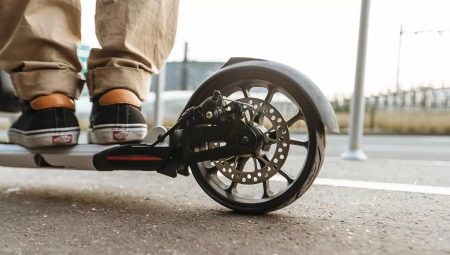Modern high-quality scooters have a complex braking system, which allows for soft braking even in emergency situations. In this article you will learn about the most popular types of scooter brakes, as well as get tips on their selection and installation.

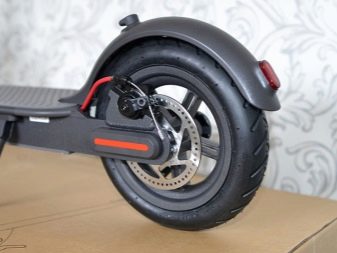
Brake requirements
Any brakes, whether they are for scooters for children or for adults, are presented Only three key requirements.
- Fast reaction. Any brake system, regardless of its type, should instantly respond to a command while driving. This can be critical in unexpected or extreme situations.
- Convenience. The brake must be in a place accessible for braking. Most often, this is a bicycle wing for foot braking or a handle with a hand brake installed.
- Reliability and durability. The brake for the scooter should be not only effective, but also reliable. This means that it should not lose functionality after several applications or erase from prolonged use. The same applies to the influence of brake mechanisms on the scooter itself - they should inflict the minimum possible damage on it.
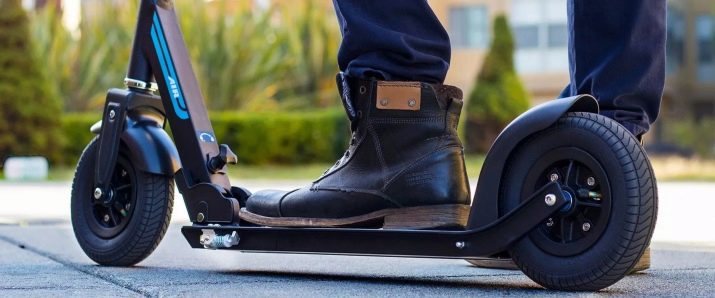
Varieties
There are several types of scooter brakes, depending on the principle of operation and the device of the brake itself, as well as its location. At the location, all brakes are divided into manual (shoe, disk, rim) and foot (brake-wing).
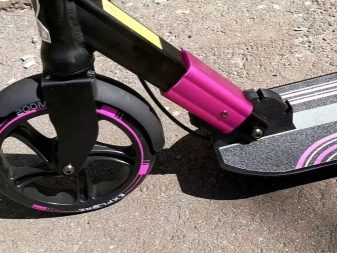
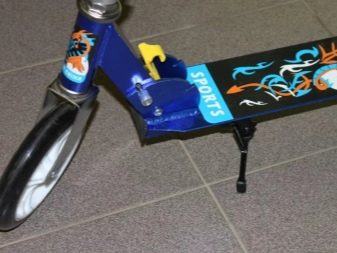
Wing brake
At the moment, this is one of the most affordable and common brakes for a scooter.Almost every model of this vehicle is equipped with a special rear wing (or swamp), which can simultaneously prevent dirt from getting on clothes and perform a braking function.
Some scooters like to call this brake mechanism “push”.
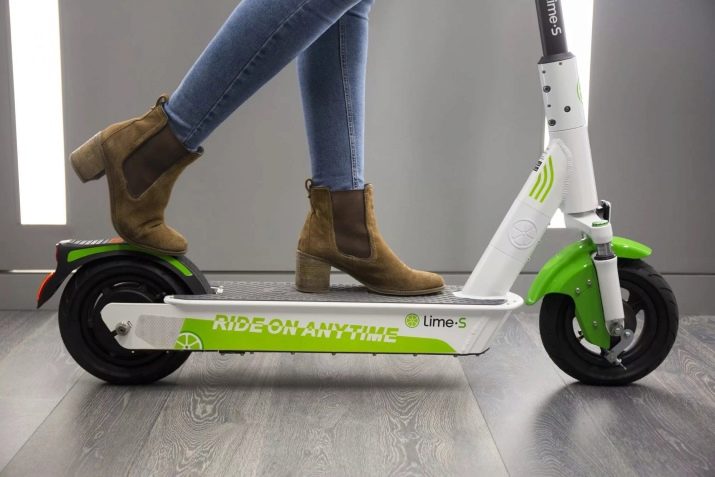
It is arranged very clearly - during the ride, the athlete presses the wing of the scooter with a pushing leg. The wing itself contacts the rear wheel of the scooter and slows it down.
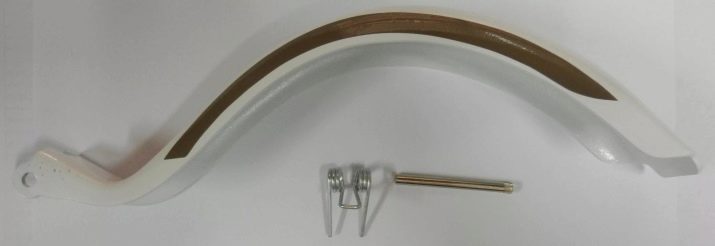
In some cases, the scooter wing is made of fragile materials - polymers or sheet metal. In this case, a special strong block is installed on the lower surface of the wheel, which performs the same braking function.
The obvious minus of such a brake is that either the wing or the special block erases over time.
In addition, both the wing and the block can harm the integrity of the wheel itself, especially when it comes to rubber or plastic models.
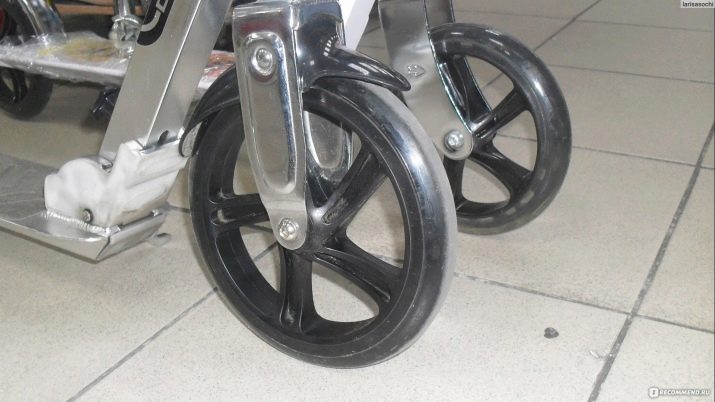
The main thing to avoid when using a wing-type brake is very frequent and sudden braking.
Usually, only novice athletes resort to this, who do not understand how much the wear of the scooter wheels increases in this case.
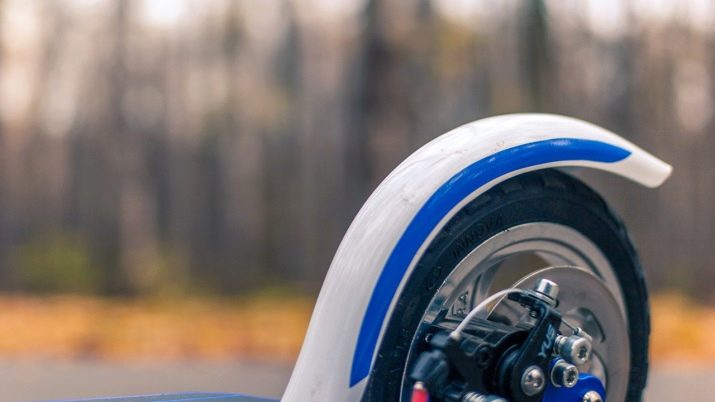
The fact is that the design of a scooter with this type of brake will really allow you to quickly brake, but if the braking is too sharp and short-term, the scooter wing will heat up the wheel very much and literally rip off a decent layer of rubber or plastic from it. Over time, this leads to the fact that the wheel loses its roundness and becomes disproportionate. If at first such problems can be invisible, then later you will begin to feel a characteristic vibration and smooth popping even on flat sections of the road.

Brake pad
The operating principle of the shoe brake is extremely simple. In this case the braking mechanism itself is located precisely on the handle of the scooter, from which a stretched cable is stretched to the front or rear wheel. If you want to brake, the self-timer clamps the brake on the handle and the cable forces the brake pad to touch the wheel.
In braking with the pad, the main problem is also low wear resistance.
The block, whatever material it is, erases over time and needs to be replaced. In sports models of scooters, one pad is usually enough for 2-4 months with constant trips and loads on the brake system.
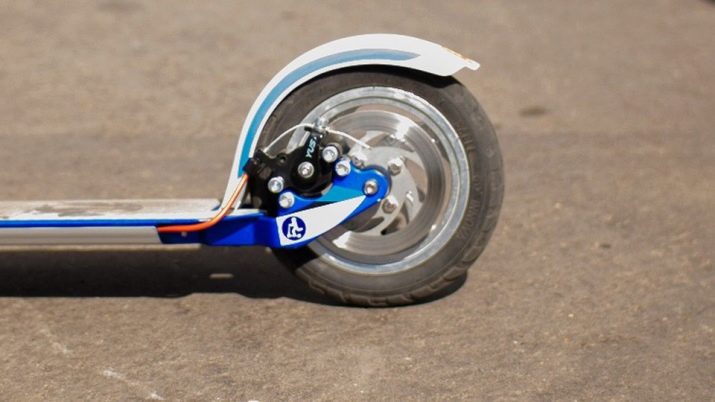
Such a brake mechanism can also significantly damage the wheel of your scooter. In addition, if the shoe brake is installed only on the front wheel, with sudden braking, the self-tapper can simply roll over its vehicle and get seriously injured. This is especially dangerous during sudden braking on steep hills.

Disc brakes
Disc-type brakes are hydraulic or hydromechanical. This brake mechanism is also controlled via a handle on the steering wheel with a cable, however, here the block does not come in contact with the wheel itself, but already with its disk. A special brake spring is used here to tension the cable, as in shoe models.
The disc brake device is designed to cause minimal damage to the scooter wheel.
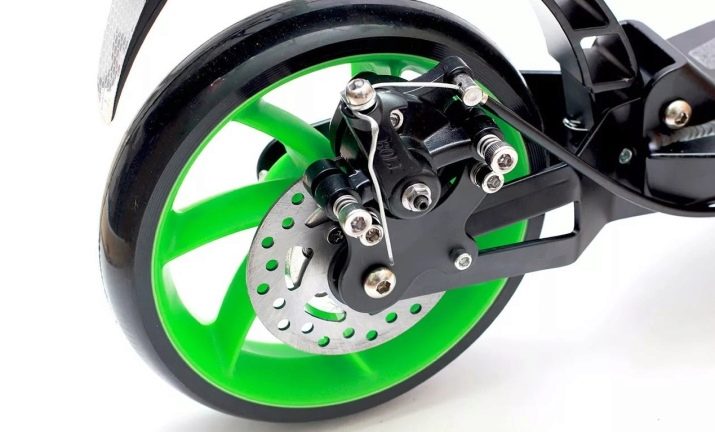
In this case the main pressure is exclusively on the brake disc mechanism, which can be simply replaced. This does not force the scooter to worry about the condition and wear of the scooter wheels, which greatly increases its service life.
The disadvantages of disc brakes include the fact that they are difficult to replace and adjust at home, as well as the fact that a high-quality disc mechanism weighs a lot.
This, in turn, affects the maneuverability and speed of the scooter.

Variants of scooters with this type of brake are now as popular as models with brake “wings”. This can be easily explained - the disc brake guarantees almost instant braking in any situation, while there is no likelihood of somersault (because they are installed on the rear wheel) or damage to the wheel / scooter.
The option is considered ideal for sports and stunt models of adult scooters, where this vehicle requires maximum control and an ideal reaction.
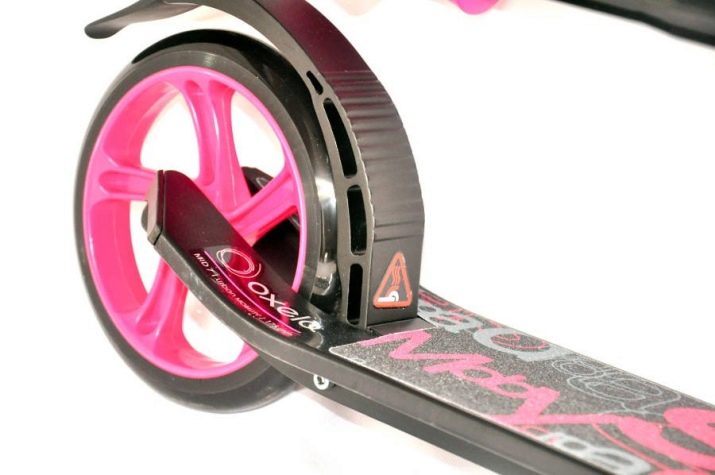
Rim brake
The principle of operation of such a brake is also based cable tension however, here braking is carried out through the contact of the brake pad not with the wheel or its disk, but with a metal rim. It also allows you to keep the wheel working for a longer period, however, again - over time, the pads will wear off and require replacement.
Typically, brakes of this type are installed on the so-called T-shirts, designed to ride on city roads and off-road.
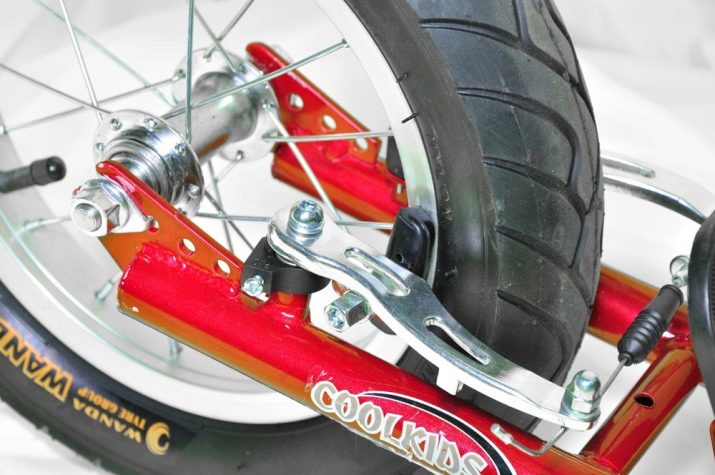
Regenerative brake
This is not an ordinary type of brake, which is usually installed. in electric scooters or modern and expensive models.
In this case, in addition to the usual braking mechanism, a special compact electric generator is installed in the scooter, which converts the energy from braking (at high speeds) into electricity.
She, in turn, enhances the braking effect on the wheel. In this case, braking is not only smooth and fast, but also requires less braking effort from the scooter itself.
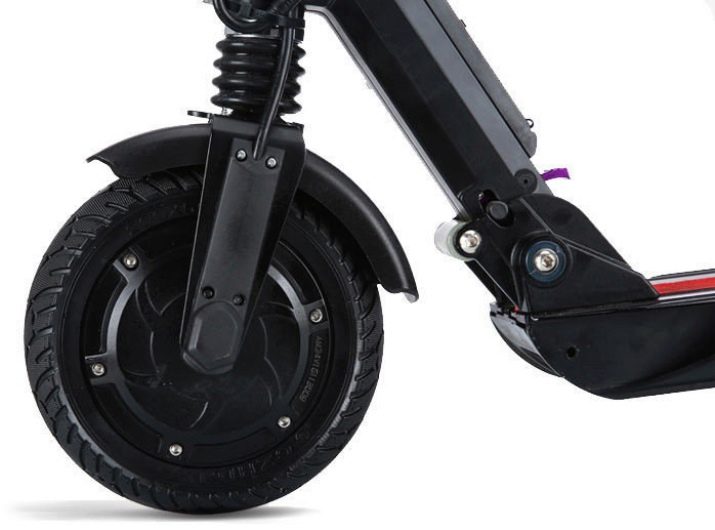
How to choose?
When choosing a brake mechanism for a scooter, you should be aware of the exact conditions under which you will use this vehicle. For light and short trips or for children's scooters, shoe sets are best suited. brakes or wing models. They are easy to repair, they are quite cheap, easy to install and operate, and also show excellent performance on flat roads.

For a more aggressive and professional ride, you should buy expensive models of rim, disc or regenerative brakes. They are as safe as possible, have excellent response to commands and have minimal impact on the integrity of the scooter wheels.

How to adjust?
As a rule, only scooter models with a cable braking system need adjustment: shoe, rim and disk. For smooth, quiet and hassle-free operation of the scooter, the cables should be properly tightened.
To give you an idea of how to adjust the brake on a scooter, detailed instructions will be given below for step-by-step tuning of a shoe brake.
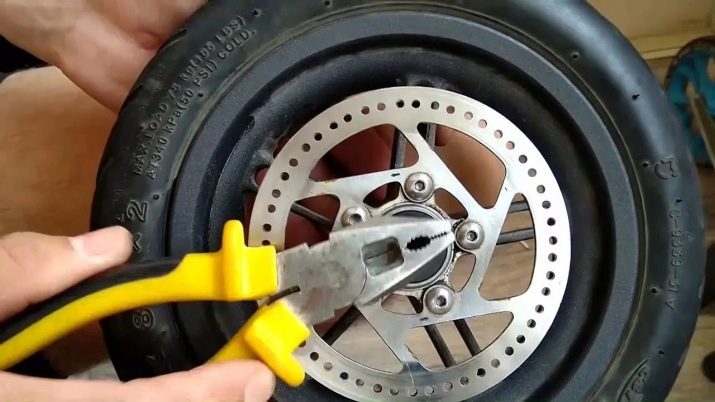
In the case of a scooter running on a shoe brake, there are 2 options for the development of events: either it is too tight and the braking is too sharp, or it is weakened and for effective braking you need to have the power to clamp the handle on the steering wheel. The only tool you need to set up your scooter in this case is "ten" wrench.
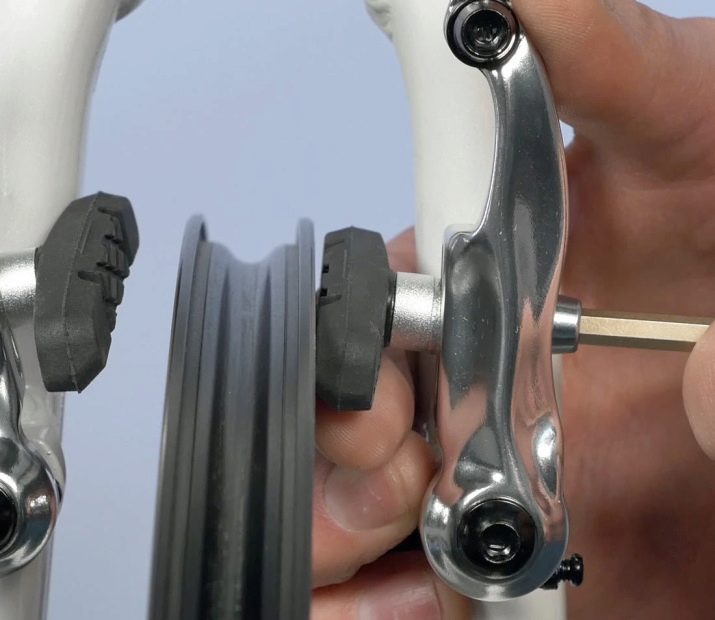
If necessary, loosen the brake
If the cable in the brake is too tight and tightly clamps the rear wheel, do not immediately unscrew something. If the scooter is equipped with a folding mechanism, simply fold it and watch how the brake behaves in this position of the scooter.
Usually it is when folded that the cable is too tight and trivially prevents the wheel from rotating.

In the event that the shoe is still holding the bicycle wheel too tight, minor adjustments will still be required. The main problem here is a too tightly tightened nut (to the right), which is responsible for the cable tension in the braking mechanism itself. In this case, the block has no choice but to relieve pressure on the wheel. In this case, all that is required of you is to slightly increase the clearance of the brake spring.
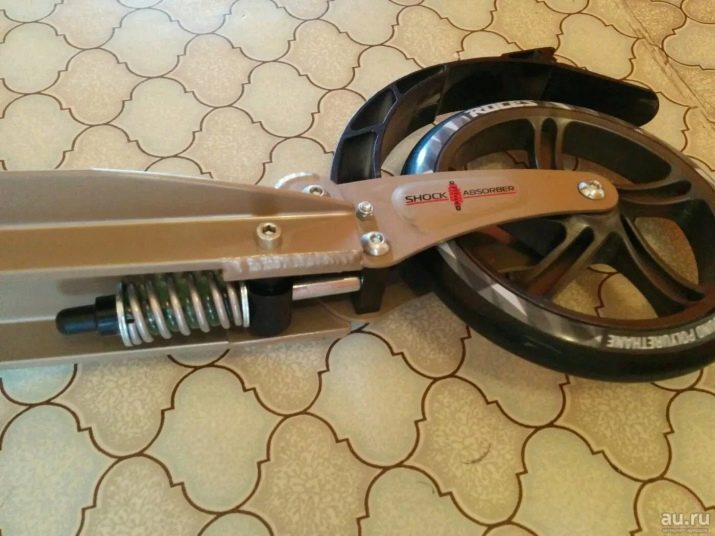
To do this, just loosen the nuts a little and turn them slightly to the left.
First, turn the bottom nut, and then the top - for this, use the same key. As soon as the clearance in the spring is increased, you will see how the block gradually begins to move away from the surface of the wheel.
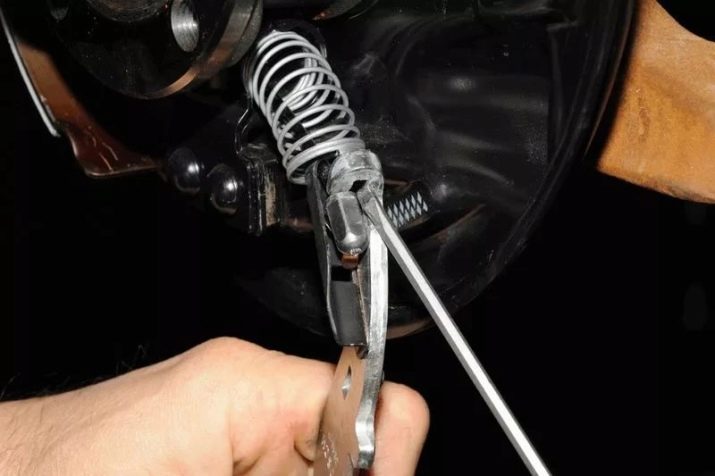
If you need to tighten
If you use your scooter constantly, the wheel, like the block, is gradually erased, which weakens the braking mechanism itself. Most often, it is the wheel that is erased, in this case, the opposite operation is described above. Both nuts gradually turn to the right before the desired clearance is formed between the wheel and the block.
If the mechanism itself needs to be adjusted on the steering wheel handle, the stiffness of the brake can be set here simply by holding or loosening the nut on the handle responsible for fixing the cable.
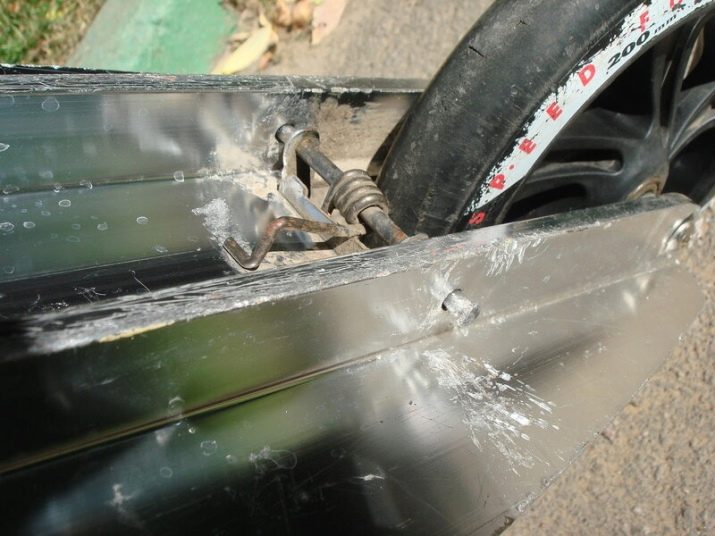
In the next video, you will learn how to properly adjust the brake.
